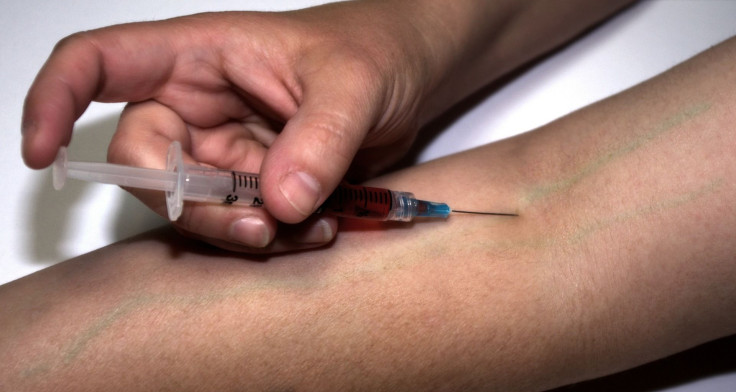Intravenous Drug Use Is On The Rise, But Harm Reduction Services Aren't Available Where They're Most Needed

Over the last 10 years, the United States has seen an increase in injection drug use. Many of the users were first prescribed opioids for injury or pain management, then developed an addiction, switching to heroin because of its lower cost. Regardless of how these users started using, the rates are going up and many areas have turned to measures like syringe service programs (SSPs) to try and minimize the damage of intravenous drug use.
Aside from the obvious health risks of opioid abuse, intravenous drug use carries the risk of HIV infection because users sometimes share needles. SSPs allow people who inject drugs to exchange their used needles in for new, sterile ones. These locations and programs reduce the chances that people will share injection equipment, consequently lowering the risk of contracting infections like HIV and hepatitis C. Many SSPs also distribute naloxone, a medication proven to help reverse opiate overdoses.
Why, then, are these programs not adequately distributed in the areas most in need of their services? A new study led by researchers at the Ichan School of Medicine at Mount Sinai highlighted the problems with current access to harm reduction programs in the U.S.
“Syringe service programs have been very effective in reducing HIV transmission in the U.S. and throughout the world,” said Dr. Don Des Jarlais, Professor of Psychiatry and Preventative Medicine at the Ichan School of Medicine at Mount Sinai and lead author of the study, in a press release. “Our data show that rural and suburban SSPs face some special challenges in recruiting clients, funding, and staffing, but that these programs can provide the needed services when they are implemented. The biggest problem is simply that we do not have enough of them in rural and suburban areas.”
Jarlais added that state and local governments would save lives by providing the service.
The research team, after assessing the landscape and availability of SSPs across the country, discovered that 69 percent of SSPs were in urban areas, with only 20 percent in rural areas and 9 percent in suburban areas. This indicated that services were lacking where people needed them the most. For example, one of the most highly reported epidemics of new HIV infections resulting from injection drug use in the last year was in southeastern Indiana. Syringe exchange programs were illegal in the state before the governor declared the HIV outbreak a public health emergency in the spring of 2015.
“Over the last 20 years, syringe service programs have proven to be very potent weapons in the fight against HIV/AIDS,” said Ann Nugent, senior research associate at the Baron Edmond de Rothschild Chemical Dependency Institute at Mount Sinai Beth Israel and co-author of the study. “The challenge today is to extend exchange programs to all persons who need them — regardless of where they live.”
Source: Jarlais D, Nugent A. Harm reductions Services Less Available in Areas Plagued by Rising IV Drug Use and HIV Infections. CDC Morbidity and Mortality Weekly Report. 2015.



























